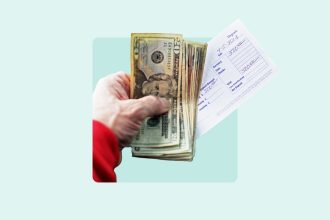Recessions aren’t common but they strike fear into the hearts of investors nonetheless — especially when you’re getting close to retirement. No one wants to see their portfolio nosedive right when they need the money most.
By recession-proofing your portfolio, you can help protect your retirement savings from the adverse effects of economic downturns. This can include diversifying your investments across different asset classes, building up a healthy emergency fund and exploring investments like annuities.
5 ways to recession-proof your retirement portfolio
Whether you are already in retirement or planning to retire in a couple of years, here are some strategies to safeguard your lifelong savings against a possible recession.
1. Diversify your investments
Diversification is a fundamental principle in investing, and it’s especially important during economic downturns. By spreading your investments across various asset classes (such as stocks, bonds, ETFs, real estate and more), you can mitigate the impact of a single asset’s decline.
There are many ways to diversify your investments. One approach is to allocate a portion of your portfolio to stocks for growth potential, bonds for income and stability, and alternative investments like real estate or commodities for diversification.
Diversification within asset classes is also important. During market downturns, for example, defensive stocks tend to do well or stay the course during volatile periods. Defensive areas include utilities, which are a necessity regardless of market conditions, health care and consumer staples, which includes items such as food, soap and diapers.
If individual stocks aren’t your thing, you can move money into defensive ETFs, which invest in non-cyclical stocks that tend to do well during recessions.
Stocks and stock funds, however, are still vulnerable to market swings, so putting money into government securities such as Treasury bonds can add an extra layer of protection to your portfolio.
2. Beef up your emergency fund
An emergency fund is a cornerstone of a recession-proof retirement plan. An emergency fund gives you a financial safety net to cover unexpected expenses, such as medical bills, job loss or major repairs — without taking on debt or selling investments at a loss to cover your basic expenses.
A general rule of thumb is to save three to six months’ worth of living expenses. However, you may want to consider a higher amount if multiple people rely on your income or your income fluctuates.
Your emergency fund should be easily accessible. Consider using a high-yield savings account or a money market account, where you won’t incur fees or owe taxes for withdrawing your money. These accounts offer a higher interest rate than traditional savings accounts while still providing easy access to your cash.
3. Use an annuity the right way
Annuities have gotten a bad rap over the years, but if used correctly, they can provide both safety and reliability during uncertain times in retirement.
An annuity is a contract with an insurance company that provides payments over a certain period of time. Annuities can be tied to the market and have a fluctuating interest rate, or they can be fixed and pay you a guaranteed interest rate. Most annuities also offer a death benefit that can be paid out to your beneficiaries after you pass away.
Annuities often have high fees, which can erode your returns over time. It’s also important to consider the surrender charges that may apply if you withdraw your money within the first five to eight years of the contract.
However, certain annuities can safeguard against recessions by providing a reliable, fixed payout (in the case of fixed annuities) and may be appropriate for investors who have the cash to fund them.
Fixed annuities
Fixed annuities offer a guaranteed rate of return on your investment, making them a relatively low-risk option. A fixed-rate annuity can safeguard against a recession by providing a guaranteed income regardless of what the market does. Fixed annuities also tend to have lower fees than other types of annuities.
However, the growth potential of fixed annuities is typically limited compared to other investment options.
One type of fixed annuity, known as a multi-year guaranteed annuity, functions similarly to a certificate of deposit, but instead of locking up your money with a bank, you’re handing it over to a life insurance company. The rates of MYGA also tend to be slightly higher than online CD rates.
Other types of annuities
Two other types of annuities, variable and indexed, link at least part of your returns to the market. If you’re worried about a recession, then sticking with a fixed annuity — which offers a steady, predictable rate of return — would be your safest option. However, as interest rates fall, the return on fixed annuities becomes less attractive.
Another decision is whether you want payments to start within the next year (immediate annuity) or down the road (deferred annuity). An immediate annuity generally requires a large upfront payment to fund your contract. A deferred annuity, on the other hand, postpones your payout until years in the future, giving you the chance to contribute funds over time.
4. Delay taking Social Security
Delaying Social Security, if possible, has big advantages. Social Security benefits are increased by a certain percentage for each month you delay taking your benefits beyond full retirement age — age 67 for most people — until age 70, when the benefit maxes out.
Although over the course of a lifetime the amount of money you will receive will be more or less the same whether you take benefits early or later on, delaying the distribution phase allows for a larger monthly check when you do begin. And if you delay and live longer, you’ll end up maxing out your Social Security benefit.
By delaying your benefit, you prevent yourself from spending the money earlier on, though you’ll need to use other resources or retirement accounts for expenses.
5. Keep making money
One surefire way to safeguard against money loss is to keep making more of it. There are a number of ways retirees can keep generating income well beyond their retirement. Whether it’s taking advantage of skills you spent decades fine-tuning or charging money to watch small children, side hustles for retirees can bring in extra cash to cover the potential losses brought by a recession.
Even if you’re still working, generating a second stream of income now can set you up for financial success in the long run. Having a supplement to your main income or retirement benefits will help safeguard against market volatility and cyclical recessions.
Bottom line
Recessions can be a major financial setback, especially for those nearing retirement. By diversifying your investments, building up an emergency fund and delaying Social Security benefits, you can position your hard-earned savings to weather any kind of market downturn.
— Former Bankrate writer Georgina Tzanetos contributed to an earlier version of this story.
Editorial Disclaimer: All investors are advised to conduct their own independent research into investment strategies before making an investment decision. In addition, investors are advised that past investment product performance is no guarantee of future price appreciation.
Read the full article here














